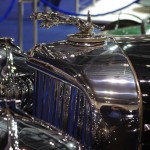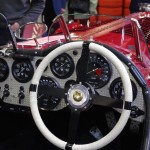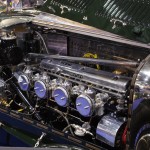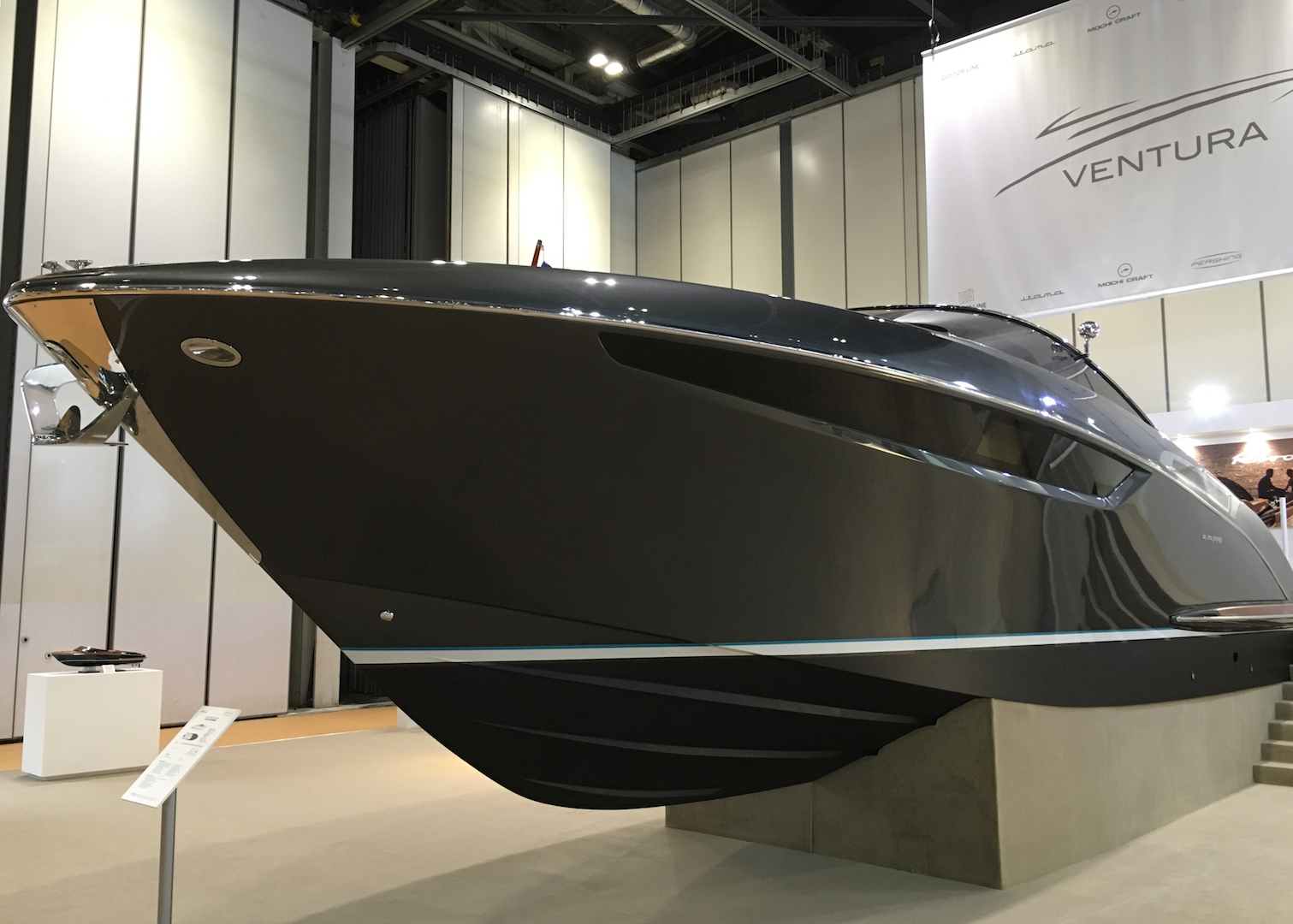January saw the opening of the first ever London Classic Car Show in the Excel Centre in Docklands. Clearly, as the inaugural show, it was never going to be as large as the national Classic Motor Show each November at the NEC, which regularly attracts over 60,000 visitors; nevertheless some 25,200 people did attend over the weekend including Doug Warren, Neil Shanley and myself from our club, on separate days. Opinions are mixed; some like Doug were very disappointed, but others enjoyed the day and might give it another try next year, on 18-21 February 2016.
This was a very different type of show, perhaps having an eye to the bankers, and their bonuses, in nearby Canary Wharf. There were very few “everyday” classics or car clubs, and almost no stands for tools or parts; this show was more dominated by the top-end marques, notable individual cars, and expensive coach builders and auctioneers. Indeed the metal within the hall must have been worth at least £250,000,000 and my neighbour and I were speculating about the potential insurance claim if there had been a fire.
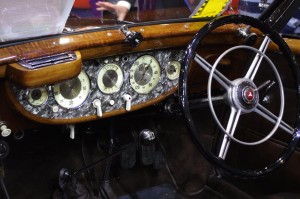
Five cars in particular caught my eye. The first was, to my mind, the most glamorous and desirable car in the show: a 1935 Mercedes-Benz 500K roadster with Art Deco mother-of-pearl dashboard and a straight eight, supercharged (“Kompressor”) 5 litre engine, widely considered to be one of the most elegant and beautiful pre-war cars ever built. Displayed by Vintage & Prestige, the story goes that it was locked up in a garage behind its owner’s butchers shop in 1956, where it remained undiscovered until 1988. It was sold at a Christie’s Auction at Beaulieu in unrestored condition to the Thulin Group, who immediately consigned the car to Wagner and Landshut in Germany for a total restoration. In 1991, the Special Roadster was sold to Mr. Ishikawa and a few years later to Mr. William Connor of Hong Kong. Something of a holy grail for car collectors, only 25 such roadsters were ever built and a car like this would be worth at least £3-£4 million; indeed a similar one sold for US$10 million a few years ago.
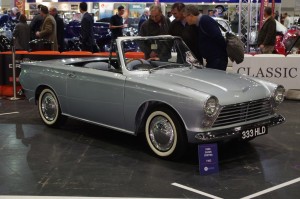
At the other end of the scale perhaps, at least financially, was the replica of a prototype 2-seater roadster that Ford developed in the 1960’s, based upon a shortened Mk 1 Cortina, apparently to be named the Ford Saxon. Sadly it never made it into production, perhaps because of emerging safety concerns (no roll bar or reinforcement), but it’s a cute car.
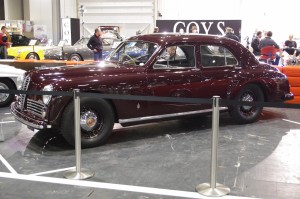 The third car to catch my eye was an Alfa Romeo 6C 2500 saloon, similar to the one that was blown up in Coppola’s “The Godfather”, killing Michael Corleone’s Sicilian bride. To my mind, the 2-seater sports cabriolet (or coupe) version of this car is the single most beautiful car of the 1940’s-50’s; click on the link above and tell me what you think!
The third car to catch my eye was an Alfa Romeo 6C 2500 saloon, similar to the one that was blown up in Coppola’s “The Godfather”, killing Michael Corleone’s Sicilian bride. To my mind, the 2-seater sports cabriolet (or coupe) version of this car is the single most beautiful car of the 1940’s-50’s; click on the link above and tell me what you think!
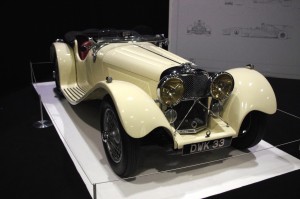 One whole section of the show was devoted to cars owned or designed by Adrian Newey, the world famous genius behind Formula 1 championship-winning cars from Williams and MacLaren in the 1990’s and Red Bull more recently. They included Newey’s own SS100, of particular interest to me because this is the actual car on which all Suffolk SS100s like mine are based. In exchange for his restoration work on this original SS100, Newey allowed Terry Rowing, the originator of the Suffolk SS100, to use it for creating the moulds and templates.
One whole section of the show was devoted to cars owned or designed by Adrian Newey, the world famous genius behind Formula 1 championship-winning cars from Williams and MacLaren in the 1990’s and Red Bull more recently. They included Newey’s own SS100, of particular interest to me because this is the actual car on which all Suffolk SS100s like mine are based. In exchange for his restoration work on this original SS100, Newey allowed Terry Rowing, the originator of the Suffolk SS100, to use it for creating the moulds and templates.
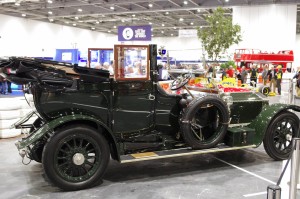 The fifth car to catch my eye was actually a pair: two Rolls-Royce Silver Ghosts, one in a classic silver and the other a limousine in dark green, each worth well over £2 million. As with all Silver Ghosts, they have a chequered history; this one had been chopped in the 1920’s before being completely rebuilt as a limousine by Mulliner Park Ward. Sadly, because of the poor lighting conditions, my photograph just does not do justice to the beautiful coachwork and paint.
The fifth car to catch my eye was actually a pair: two Rolls-Royce Silver Ghosts, one in a classic silver and the other a limousine in dark green, each worth well over £2 million. As with all Silver Ghosts, they have a chequered history; this one had been chopped in the 1920’s before being completely rebuilt as a limousine by Mulliner Park Ward. Sadly, because of the poor lighting conditions, my photograph just does not do justice to the beautiful coachwork and paint.
Other cars of interest included the Eagle E-types, Ian Callum’s own Mk II derivative – not for me, because I feel it can’t decide whether it’s a grand, luxurious classic or a highly tuned sports monster and therefore fails to be either – a lovely Citroen DS roadster, numerous Aston Martins, Bentleys, Bugattis and Rolls-Royces, an enormous, 8-litre 8-inline engined Bentley special, a racing (red) Bentley and a lovely SS Jaguar 1.5 litre (Mark IV).
Although an innovative idea, I do agree with Doug that the “Grand Avenue” was not very successful, albeit for different reasons. On the Friday when I went, they only ran the cars up and down it for a couple of 30-minute sessions and, although it didn’t seem unduly loud or noisy, it was almost impossible to see anything unless you were right at the front. Then the whole avenue was closed off for ages, meaning that we were unable to get to the stands on the other side, nor walk up and down to see the cars in the avenue itself. It’s a good idea because it’s great to see the cars moving under their own power; however, for next year’s show, I suggest it may be worth re-thinking the details a little.
Richard Gibby


